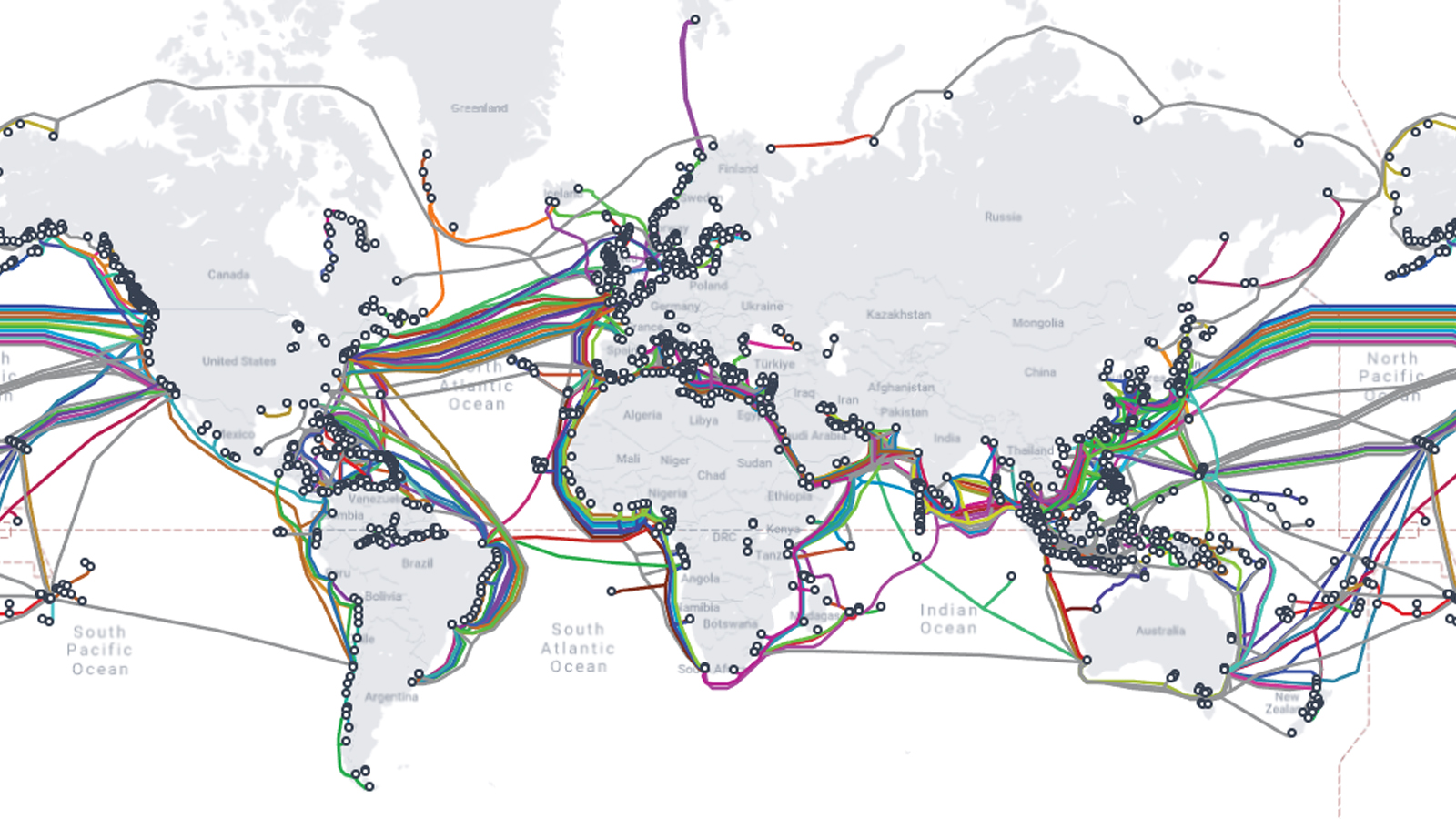Meta plans 50,000 km undersea cable to connect the U.S., Brazil, Africa, India, and Australia
'Project Waterworth' will be Meta's own information superhighway across the southern hemisphere.

Meta just announced an ambitious new undersea internet cable project that spans over 50,000 km to connect North and South America, Africa, Asia, and Australia. The Facebook parent company is part-owner of several undersea communications cables, but this new plan, called Project Waterworth, will apparently be the first that it will solely own and operate. Meta says it will be the longest cable deployed so far and will likely cost the company over $10 billion.
The areas that Project Waterworth will connect, namely the U.S. East Coast, Brazil, South Africa, India, Australia, and then back to the U.S. West Coast, are already connected to the rest of the world via several other underwater cables. However, if Meta’s map is accurate, this project will be the first one that will directly connect Brazil to South Africa. It will also be the only one connecting India to Australia while bypassing the Strait of Malacca.
“This project will enable greater economic cooperation, facilitate digital inclusion, and open opportunities for technological development in these regions,” says the company. “For example, in India, where we’ve already seen significant growth and investment in digital infrastructure, Waterworth will help accelerate this progress and support the country’s ambitious plans for its digital economy.”

However, sources also say that the social media giant is building this project so that it will have its own physical infrastructure that avoids global geopolitical hotspots. During the past few months, there have been several incidences of undersea cables, including those used for communications and electrical transmission, reportedly being cut by civilian cargo ships with connections to Russia and China. Project Waterworth’s routing seems to specifically avoid areas where there’s a higher chance of disruption, including near Europe and the South China Sea.
Project Waterworth will supposedly deploy a more resilient cabling technology to help it withstand the usual wear-and-tear better. However, Meta will also lay the cable in deep water, sometimes at depths of around 23,000 feet, to make it harder to reach and sabotage. It also said that it will use “enhanced burial techniques in high-risk fault areas, such as waters near the coast, to avoid damage from ship anchors and other hazards.”
Get Tom's Hardware's best news and in-depth reviews, straight to your inbox.

Jowi Morales is a tech enthusiast with years of experience working in the industry. He’s been writing with several tech publications since 2021, where he’s been interested in tech hardware and consumer electronics.
-
bit_user I would hope they're planning to lease out excess capacity to general internet traffic, but I somehow doubt it.Reply -
TheOtherOne Infrastructure like this should NEVER, EVER be owned by any private company. Govts all over the world should get together to build and maintain these to avoid private companies owning unique communication infrastructure and then charging ridiculous amount to access it that only keeps increasing every year on the name of "inflation".Reply -
bit_user Reply
Unlike a road or sewer, there's nothing to prevent a competitor from installing their own link. Then, competition can drive down prices.TheOtherOne said:Infrastructure like this should NEVER, EVER be owned by any private company.
Where I'll agree with you is that we don't want backbone companies all having their own cloud services, and tying use of their links to their services. This could create a barrier to entry for competitors. If a country is concerned about that, they could tie the landing rights of the cable to a commitment that the public be allowed to use at least some minimum % of its bandwidth at maximum upper limit of margins for the owner.
In the US, we have private utility companies. Their potential for abuse is limited, because they're somewhat heavily regulated and usually have limits on their margins.TheOtherOne said:Govts all over the world should get together to build and maintain these to avoid private companies owning unique communication infrastructure and then charging ridiculous amount to access it that only keeps increasing every year on the name of "inflation". -
Li Ken-un ReplyMeta plans 50,000 km undersea cable to connect the U.S., Brazil, Africa, India, and Australia
physical infrastructure that avoids global geopolitical hotspots
Brazil
Russia
India
China
South Africa🤔
And funny that the headline should name Africa the continent while all others are countries… :side-eye: